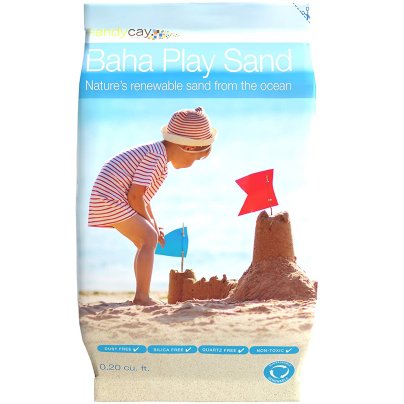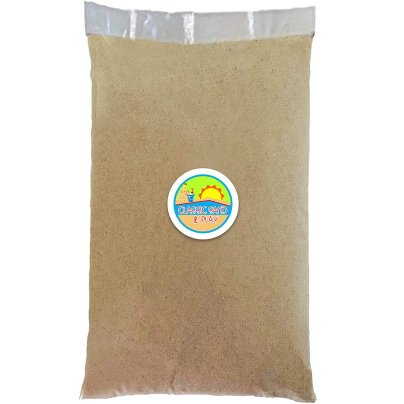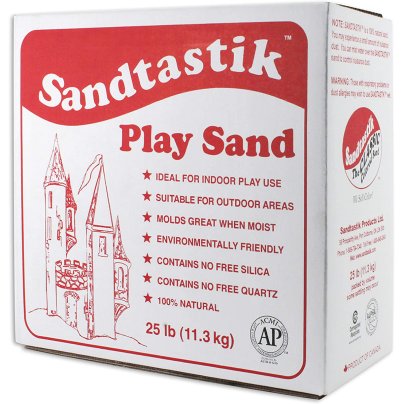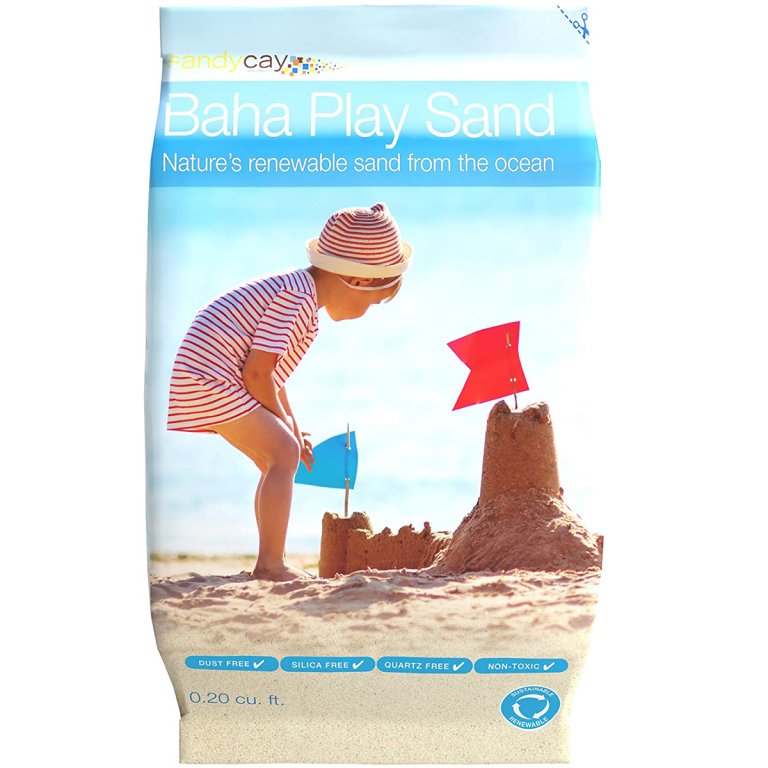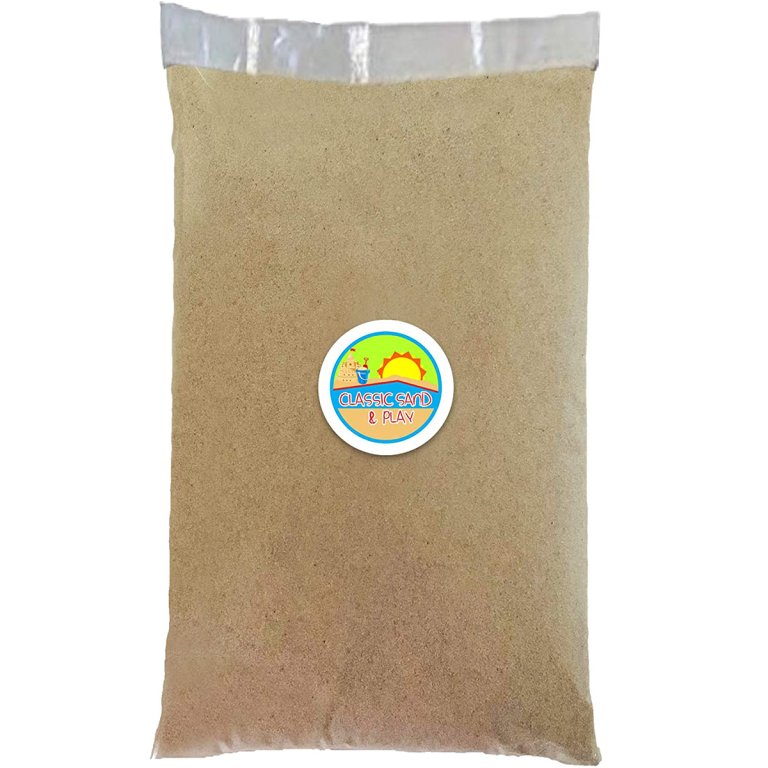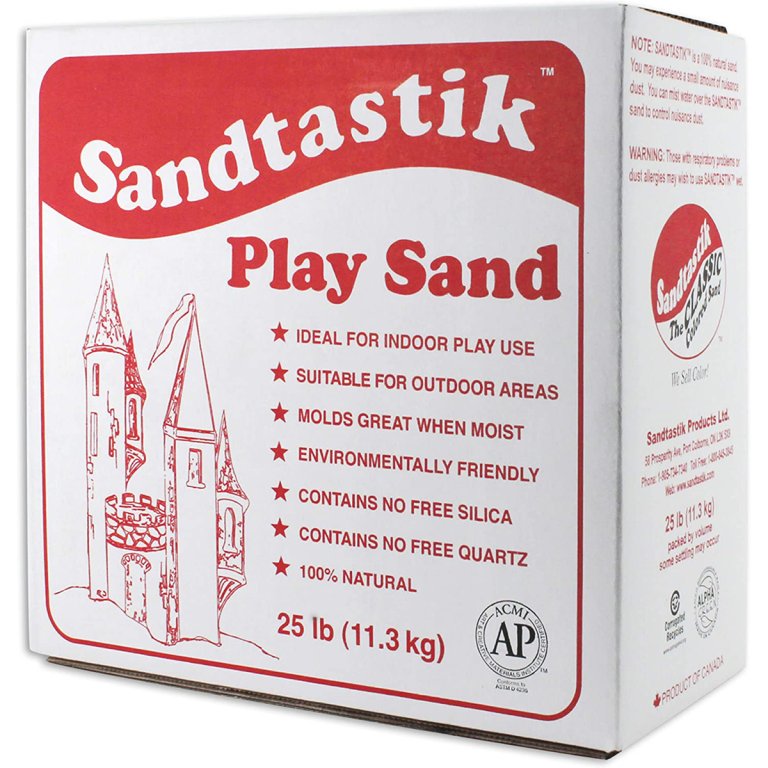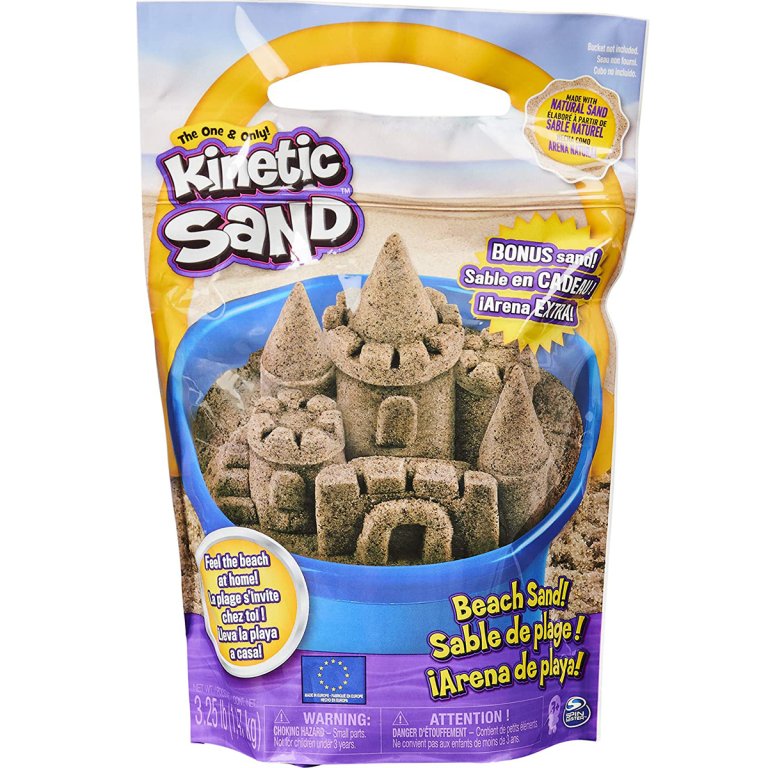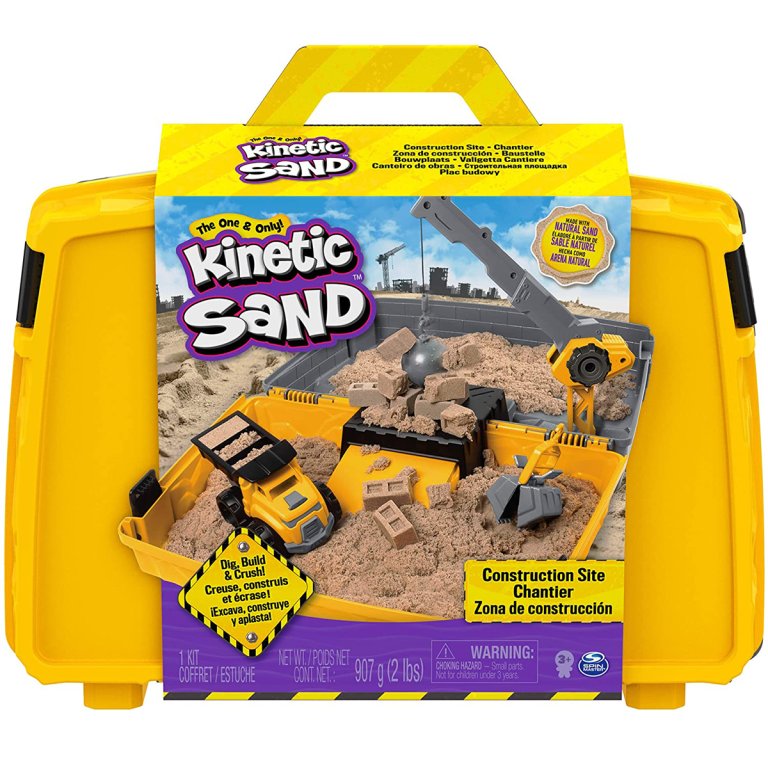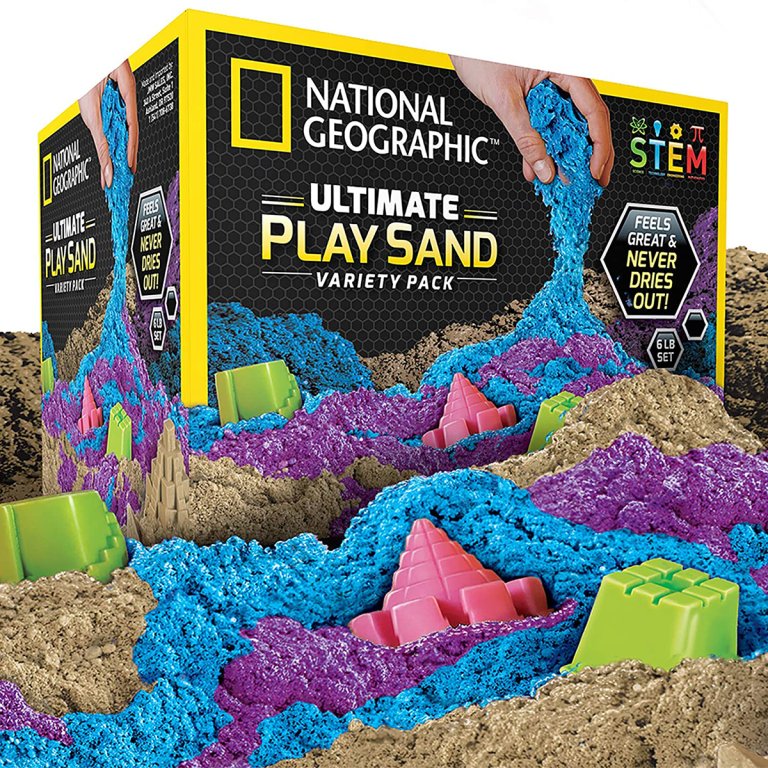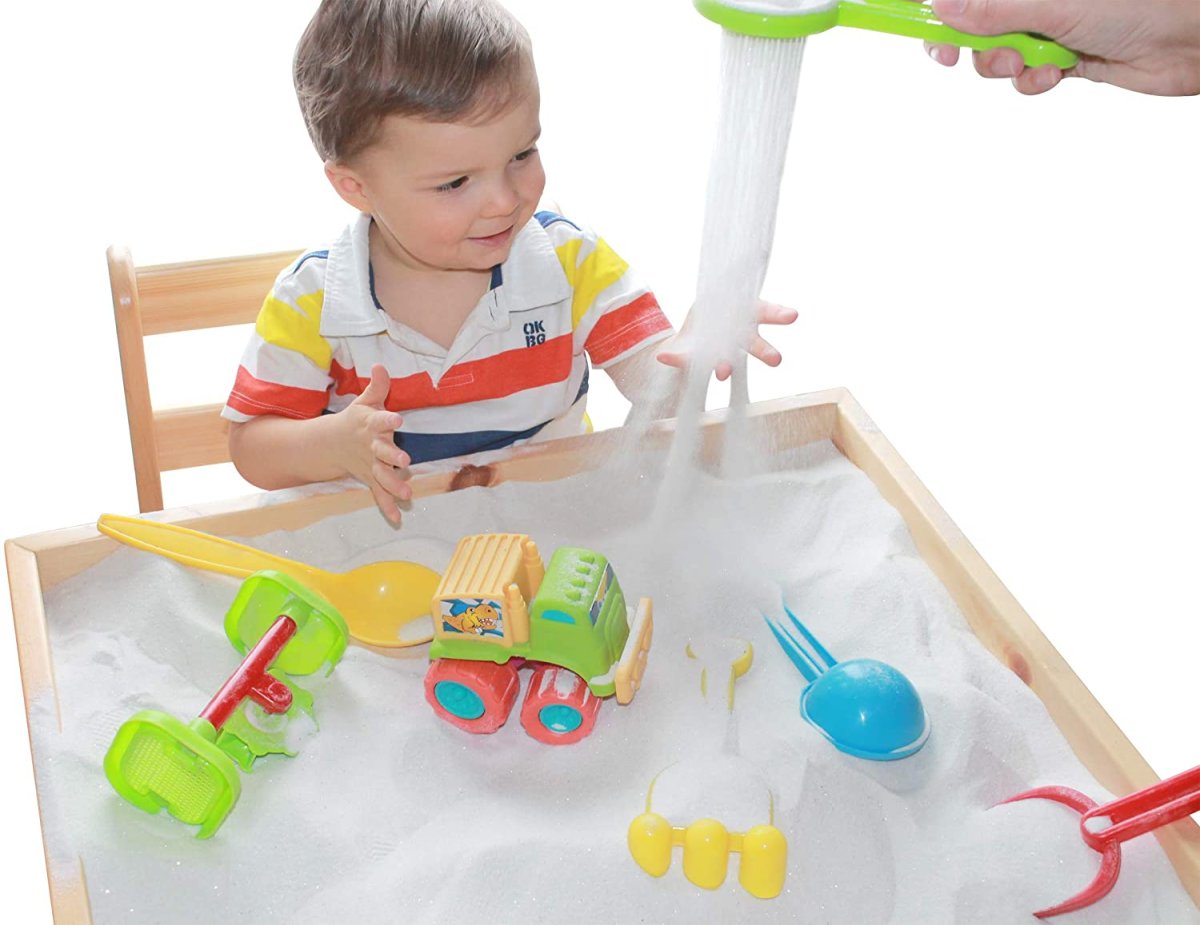
We may earn revenue from the products available on this page and participate in affiliate programs. Learn More ›
Fill up the sandbox with the right sand, and you can watch your kids build a world that’s all their own. The freedom of a sandbox encourages children’s creative development and exercises their fine motor skills, improving hand-eye coordination and muscle control. However, not all sand is appropriate for filling a child’s sandbox. Sand that’s typically used in construction doesn’t go through the same cleaning and processing as sandbox sand, so it’s coarser and can be harmful to kids.
The best sand for sandbox play should be free of potentially dangerous contaminants, like silica dust, to protect your kids while encouraging them to play outdoors. This list of top products includes only silica-free options to help keep your kids safe while they’re playing in the sand.
- BEST OVERALL: Calcean BAHA Natural Play Sand 20lb for Sandbox
- BEST BANG FOR THE BUCK: Classic Sand and Play Sand for Sandbox
- BEST PROCESSED: Sandtastik Sparkling White Play Sand
- BEST KINETIC: Kinetic Sand, 3.25lbs Beach Sand for Squishing
- BEST WITH PLAY SET: Kinetic Sand, Construction Site Sandbox Playset
- BEST COLOR VARIETY: NATIONAL GEOGRAPHIC Play Sand Combo Pack
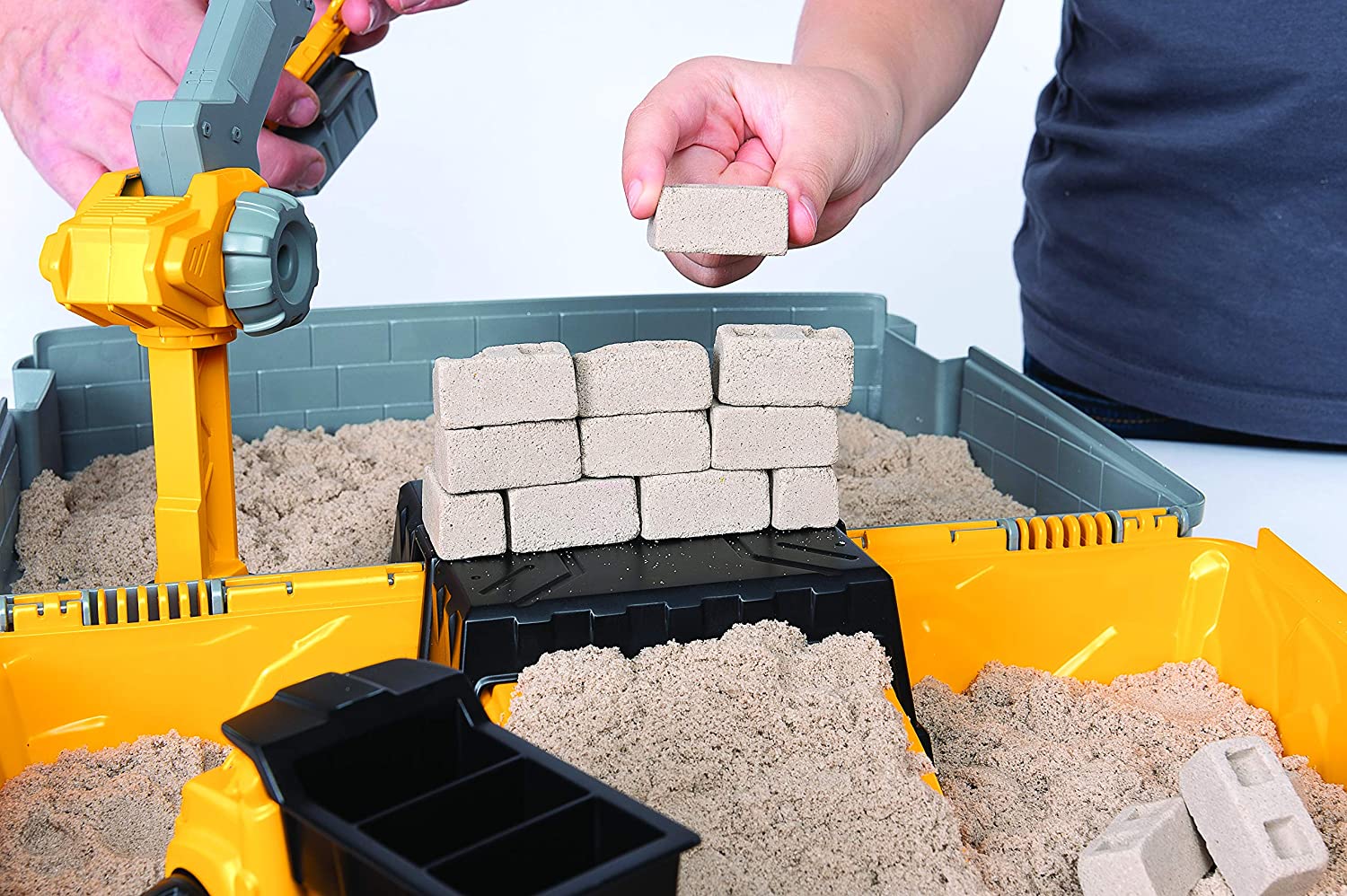
Our Top Picks
This assortment of top products was chosen for the texture, color, type, and overall quality of the sand to help shoppers find the best sand for a sandbox to keep kids safe and happy.
Best Overall
Calcean BAHA Natural Play Sand 20lb for Sandbox
See ItNatural sand for sandboxes, like this package of natural sand from BAHA, is a great option for younger kids because it has a coarser composition that’s easy to clean off when it’s time to go inside. This sand is also fine enough that children can form it to make small shapes and structures when it’s wet, helping to develop their creativity and build their own worlds.
This 20-pound bag of natural sand has been harvested directly from the ocean floor and beaches of the Bahamas. The sand has been verified as nontoxic, dust-free, and silica-free, so parents don’t have to worry about their children breathing in harmful particles during playtime.
Best Bang For the Buck
Classic Sand and Play Sand for Sandbox
See ItThe versatile Classic Sand and Play Sand is a natural sand that comes packaged in a 40-pound bag. The product works well for both dry and wet play. When the sand is completely dry, it has a fine texture that is difficult to pick up without a shovel, bucket, or other container. When wet, it becomes moldable, allowing kids to build towers, castles, and other structures.
The natural sand has a classic tan color and performs extra duty for landscaping, gardening, and crafts, or as a habitat for reptiles. It’s grated and washed to remove contaminants. After washing, the company dries the sand so that mold cannot form. This natural sandbox sand is nontoxic and free of dust particles, keeping kids safe while they play.
Best Processed
Sandtastik Sparkling White Play Sand
See ItProcessed sand for sandboxes like this box from Sandtastik is made specifically for kids’ play, so with its fine texture, the sand pours freely when it’s dry but molds easily when it’s wet. The sand ingredient is feldspar rock, which gives it a sparkling white color. The company grates and washes the silica-free product to remove any potential contaminants before packing the sand into the sealed container.
The package contains 25 pounds of sand, suitable for use in sandboxes or indoor sand tables, so kids can enjoy playing with sand both inside and outside. The white color contrasts with leaves, grass, bugs, and other debris that can land in the sandbox, so it cleans up easily for safe play.
Best Kinetic
Kinetic Sand, 3.25lbs Beach Sand for Squishing
See ItBring the fun of a sandbox into the home with this Kinetic Sand Store 3.25-pound package of kinetic sand that has a classic tan color and a polydimethylsiloxane coating. The coating causes the sand to stick to itself instead of to the table, floor, or kids, so cleanup is a bit easier. With the almost sticky texture, the sand won’t need added water for kids to build castles, structures, and other sculptures or sand art.
The grains of this sand are larger than the grains of processed or natural sand, and the coating lets the sand stick to itself so that this kinetic sand achieves the same moldability as natural sand. Due to the larger grain size and the polydimethylsiloxane coating, the sand doesn’t produce dust during play, making it safer and more fun for children who might have breathing problems or sensitivities to dust in the air.
Best With Play Set
Kinetic Sand, Construction Site Sandbox Playset
See ItThis portable Kinetic Sand Store play set comes with its own sandbox, which doubles as a carrying case for the sand and accessories. The set includes 2 pounds of kinetic sand in a classic tan color and with a polydimethylsiloxane coating. This coating gives it a soft texture that sticks to itself, so kids can easily create sand art, build castles, or play with the toys and molds in the set.
Accessories include a crane with a wrecking ball, a sand bucket, and a dump truck with brick molds, so kids can create little bricks for building. It’s an innovative, fun product for indoor or outdoor use, and children can mold the sand without adding water, reducing the risk of creating a big mess inside the home or on the patio.
Best Color Variety
NATIONAL GEOGRAPHIC Play Sand Combo Pack
See ItWith this National Geographic variety pack of kinetic play sand, kids can create multicolored sand art, build unique landscapes, or construct towers. The package comes with 6 pounds of kinetic sand, including 2 pounds each of purple, blue, and tan varieties. It also has six molds to help kids form castles, pyramids, and more without needing to add water.
The sand’s smooth texture feels soft to the touch, and kids can keep the three colors separate or combine them to create fun sculptures or patterns. The sand is nontoxic and has a polydimethylsiloxane coating that causes it to stick to itself. This coating doesn’t dry out over time, so kids don’t have to worry about packing it away in a sealed bag when they are done playing.
What to Consider When Choosing the Best Sand for Sandboxes
Before choosing a product to cushion the ground below the swing set or fill the sandbox, be sure to learn about important features like the type of sand, the texture, and the color. With an understanding of these product factors, it becomes easier to decide which option is the best sand for filling a particular sandbox.
Type
There are three types of sand commonly used for filling sandboxes and sand tables, including natural, processed, and kinetic sand.
- Natural sand typically comes straight from the beach or the desert. It forms naturally from very small rocks that have eroded. Due to this formation, natural sand is normally coarser than processed or kinetic sand. The manufacturer then washes and filters the sand before packaging.
- Processed sand is made in gravel pits and quarries. Thorough washing and filtering ensure that it’s clean and safe for kids. However, some products might still contain silica dust, which can be harmful if inhaled in large quantities. It’s advisable to avoid these products and stick to silica-free sand for playtime.
- Kinetic sand is coated with polydimethylsiloxane, which is a nontoxic, silicone-based organic polymer that goes into soft clay products like Silly Putty. This coating causes the sand to stick together, forming a moldable composition for building in the sand without the need for water. However, kinetic sand typically comes in smaller amounts that are more expensive than either natural or processed sand.
Texture
The three types of sand offer different textures.
- Natural sand has been formed through years of erosion. While this process is effective, sand produced naturally is often coarser than either processed or kinetic sand. However, the texture of this sand makes it easier to clean off when it’s time to go inside.
- Processed sand is intentionally made, rather than forming naturally through erosion. Manufacturers can choose the appropriate level of processing for sandbox sand, then wash and rinse the product. When the sand is ready to go, it has a fine, smooth texture that can create buildings, roads, and other innovative additions to the sandbox by adding a little water.
- Kinetic sand goes through a series of processes to remove contaminants, clean and filter the sand, and then coat it with polydimethylsiloxane. This coating gives the sand a smooth, almost soft texture that’s easy to shape, mold, and even cut without adding water. Kinetic sand is a great option for indoor play, and the coating makes it easier to clean up than other types.
Color
Parents often overlook color because they think of sand as having a classic tan appearance, so they look no further. However, depending on the specific product, several color options might be available, including red, green, blue, yellow, purple, and more.
This is a personal preference for most people, so it’s a good idea to check with the kids and see what they prefer. If they can’t decide on one color, some kits come with multiple colors.
White sand looks great in the sandbox, and any bugs, feces, or debris will stand out against a white background, making it easy to keep the sand clean. You always can fill a sandbox with tan or white sand, then add a small play set of colored products for molding and building.
FAQs
For those still unsure of the best type or quantity of sand for a sandbox or sand table, continue reading to explore some common questions.
Q. What is the best type of sand for a sandbox?
The best type of sand for a sandbox has a nontoxic and silica-free mix, ensuring that kids are safe while they play. If the sand is safe, it’s best to choose a product that has the most appealing features for the children, like assorted colors or the moldable, mess-free composition of kinetic sand.
Q. How much sand do I need for my sandbox?
To determine the volume of sand for the sandbox, follow these simple steps:
- Measure the length and width of the sandbox. For circular sandboxes, measure the diameter.
- Decide how deep you want the sand to go. Typically, half a foot to 1 foot is plenty for most kids.
- Use the length, width, and height of the sandbox to calculate the volume (V = L x W x H). Alternatively, find the volume of a circular sandbox by using this formula V = πr2h, where π is equal to 3.14, r is the radius (or half of the diameter), and h refers to the ideal height or depth of the sand.
For example, if a sandbox measures 4 feet by 4 feet and you want half a foot of sand for the kids to play in, then the total volume you would need to fill the sandbox is 8 cubic feet of sand. A circular sandbox with a diameter of 4 feet and an ideal sand depth of half a foot needs about 6.3 cubic feet of product.
Q. How often should I change the sand in a sandbox?
Change the sand in the sandbox once every 1 to 2 years, depending on how frequently kids use the sandbox. It’s a good idea to store at least one bag of sand (plus all the toys and accessories) in a deck box or garage to top off the sandbox when necessary.
Q. How do I maintain sand in a sandbox?
Properly maintain the sand by regularly raking it to remove any debris, and check for bugs or animal feces. Keep the sandbox covered whenever possible, but make sure to allow wet sand to dry properly before covering. Otherwise, the sand can begin to grow mold. Also, it’s advisable to replace the sand about once every 1 to 2 years.
